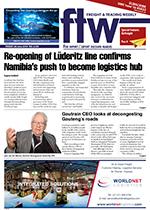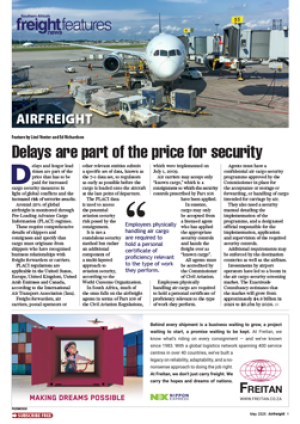Liberalisation of the African skies would have a significant impact on the growth and development of the cargo sector, says Chris Zweigenthal, chief executive of the Airlines Association of Southern Africa (AASA). It’s been slow and difficult to implement on a continental scale due to varying states’ positions on their readiness for implementation, says Zweigenthal. “It is my understanding that cargo route rights have been liberalised further than passenger route rights,” says Zweigenthal. “With a reliance on passenger aircraft for belly space for cargo where there are limited all cargo aircraft, such liberalisation would open up many more opportunities for African aviation to transport cargo across Africa.” According to Zweigenthal policy obstacles, however, still stymie efforts to get all of South Africa’s neighbouring states on the same page in respect of the implementation of the Single African Air Transport Market (SAATM) and the removal of trade barriers and visa restrictions. “A total of 28 of the 54 African States have signed a solemn commitment to SAATM. Of these, six out of the 15 SADC states have signed.” He says the challenges in southern Africa are very similar to those in the rest of the African continent. The biggest hurdle in his view is making the airline industry a sustainable, profitable business. “Over the past five years, Africa has not managed to record an overall profit, varying between a loss of US$ 100 million and US$ 800 million over this period. In 2019, the loss is expected to be in the region of US$ 300 million. Globally, over this period, aviation has recorded profits ranging from US$ 14 billion to US$ 38 bn with the profitability in 2019 expected to be US$ 28 bn,” he says. In Africa small fleets and lower than optimal aircraft utilisation result in unit costs that are high and operating margins that are low, ultimately leading to unfortunately poor overall financial performance – with some obvious exceptions. “Whilst the new initiative of the SAATM is gaining some traction to operationalise the Yamoussoukro Decision (YD), much work needs to be done on a continental basis in the implementation phase to truly liberalise the African skies. This needs to ensure reciprocal benefits are realised for all airlines operating across the African markets and enable new markets and city pairs to be opened up across the regions,” he says. “We also need to continue to work to open up the continent through relaxation of visa restrictions (AU passport discussion) and trade barriers (African Free Trade Area). We need to put the talk into action and realise the benefits of freer movement across our continent.” These issues, he says are critical. “SAATM needs to be implemented across Africa, ensuring level playing fields are achieved with the fair and reciprocal exchange of route rights in terms of accessibility and value whether they be third, fourth or fifth freedom rights. In respect of taxes and charges, in line with International Civil Aviation Organisation (Icao) policy, governments must be requested not to add new taxes to the international aviation environment, and to remove those that are currently in place. Governments must also be requested not to impose taxes on domestic aviation.” Globally aviation is expected to record profits of US$ 28 billion this year. – Chris Zweigenthal

